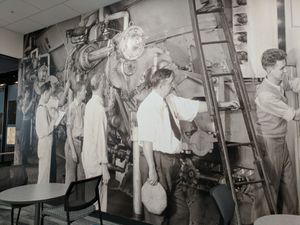I have just finished Nicholas Carr’s The Big Switch. Here is a sample:
The complexity and inefficiency of the client-server model have fed on themselves over the last quarter century. As companies continue to add more applications, they have to expand their data centers, install new machines, reprogram old ones, and hire ever larger numbers of technicians to keep everything running. When you also take into account that businesses have to buy backup equipment in case a server or storage system fails, you realize that, as studies indicate, most of the many trillions of dollars that companies have invested into information technology have gone to waste. [The Big Switch, p. 56]
Most of the software and almost all of the hardware that companies use today are essentially the same as the hardware and software their competitors use. Computers, storage systems, networking gear, and most widely used applications have all become commodities from the standpoint of the businesses that buy them. They don’t distinguish one company from the next. The same goes for the employees who staff IT departments. Most perform routine maintenance chores – exactly the same tasks that their counterparts in other companies carry out. The replication of tens of thousands of independent data centers, all using similar hardware, running similar software, and employing similar kinds of workers, has imposed severe penalties on the economy. It has led to the overbuilding of IT assets in almost every sector of industry, dampening the productivity gains that can spring from computer automation. [The Big Switch, p. 57]
Carr makes an analogy with electric power. Many years ago, companies would have had their own power generators. This was very inefficient and we moved to a utility model, where generating capacity was concentrated and delivered to others over the electric grid. He foresees the emergence of a similar model with computing and applications, a movement to a utility model where capacity is delivered as required over the network.
Of course, as he notes, this is already upon us. Think of a couple of prominent examples: Amazon Web Services and the range of Salesforce.com’s services.
Amazon provides computation, storage and other services on an on-demand basis. Werner Vogels, Amazon CTO, has an interesting presentation where he talks about Amazon’s webscale services and discusses their rationale. The subtitle of the presentation is “compete on ideas, not resources”. In terms that echo Carr’s, he talks about the 70/30 switch, claiming that 70% of a firm’s “time, energy and dollars is spent on undifferentiated heavy lifting” in building out infrastructure, while 30% is spent on “differentiated value creation”. Amazon wants to help organizations reverse those numbers, reducing the time spent on undifferentiated, increasingly commodity, infrastructure.
I was looking at My Starbucks Idea the other day and was interested to see that it was powered by force.com. This is a suite of on-demand tools from Salesforce.com which claim to allow you to build enterprise applications without any custom development work. What immediately struck me was the way in which the service was promoted, echoing Carr and Vogels: the strapline is “Finally, focus on innovation, not infrastructure”. I liked their line:
Free up the dollars wasted “keeping the lights on”
with a zero-infrastructure model.
The ‘big switch’ is going to be a major issue for libraries over the next few years. They spend too much time getting their systems to work, and not enough time putting them to work.
Of course, much will depend on what types of services are available to libraries from their providers and it will be as interesting to see how those providers reconfigure their offerings in coming years and what new providers emerge.
Note: I was prompted to note the Big Switch after reading and commenting on Mark Dahl’s post here.
Related entries:




